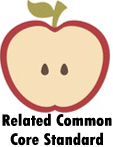Reading Strategies Worksheets
Related ELA Standard: ELA

Forming good habits when reading can greatly enhance our ability to understand the information that is presented. As the word strategies implies, there is no one strategy that is better for you than the rest of them. The most effective strategy differs for just about everyone. Just like any form of learning, we all thrive under certain circumstances and are hindered by others. With some experience each student will learn what works best for them. We encourage primary teachers to expose students to as many different techniques, as time will allow for. We also must consider that the type of text we are working with also dictates which strategy will work best for that individual student. Students may learn a method that works great with expository text yet does not bode so well for them when it comes to working with narrative text. These worksheets will help immerse students in several different strategies to help them better understand what they are reading.
Reading Strategies Worksheets To Print:
Highlight It - This is nice summation of the more common useful techniques.
Summarize - Summarizing means finding the most important parts of a text and
rewriting them in your own words.
Think About What You Already Know - Thinking about what you already know about a topic can help you to
understand and make sense of new information about the same topic.
Cause and Effect - One way to increase your understanding when you read is to
recognize cause-and-effect relationships when you encounter them
in the text.
Connections - One way to increase your understanding when you read is to make
connections between what you are reading and things that you are
already familiar with.
Connect It - As you read the assigned text, try to
connect what you are reading to your own life, to other things you
have read, and to things you already know about the world.
Predictions - As you read, use what you already know
and understand, along with clues from the text, to
predict what will happen next.
Categorize and Classify - Read the text. Think about things in the text that you can
categorize or classify. How could you group these things together?
Checklist - This is helpful to have by your side when you are reading something of good length.
Bring It to Life - Write or draw in the box.
When you have finished reading the text.
Visualize - Visualizing means creating a picture of something in your
mind. While reading, use clues from the text to imagine what you are
reading as if it were a movie.
Common Reading Strategies to Explore with Your Students
In order to learn what works best for individual students is not always a straightforward practice. It works best when teachers model the strategy first and then let students loose to practice it. The pivotal piece comes when teachers evaluate how students do with each strategy and provide them with valuable feedback. Providing feedback in a proactive manner is critical. Teachers should retrace the students took to get to where they are and point out any missteps they find along the way.
The general approaches that teachers often start out work on building off of the student’s prior knowledge. The technique I like to explore first with students is making predictions. We begin by reading the introductory portion of the work and then stop and discuss with students where they feel the story is headed. Then as we proceed to read, we revisit that initial prediction. This creates a twist and turn approach to tackling text.
The main idea technique is helpful when working on lengthy texts. Students will read a work and then we ask them to identify the beginning, middle, and end of text. At each portion, we ask them to identify the main points of the work. Once they have a good handle on the work, we can they get a bit more abstract and ask them to identify the setting(s) and themes of the work. The overall goal is for them to be able to retell the story to other students. I like putting this in motion by using reading groups. Each of the groups must explain their text to the other groups.
The basic reading comprehension notion flows into questioning. Yes, answering questions about what you have read can help a great deal. A valuable skill that teachers can help students develop is how to approach answering these questions. Modeling the process of how to answer questions pays off big dividends for students. Doing this often with your students will make your life much easier as a teacher. I find that asking students to write their own questions is a valuable tactic to elicit higher level thinking skills.
Some more advanced tactics include encouraging students to make inferences and visualize what they have just been exposed to. Inquiry is something that many students will not be comfortable with, at first. A good way to jump start this is to ask them how the text made them feel and some questions they may have about it. After they are comfortable doing this asking them to read into the text a bit and understand the context that surrounds it is not a huge leap. Visualizing a story often start with asking them to draw a picture that might best accompany the text. After they have success with this, have them draw a picture at the start of the text and then once they concluded with the work.
